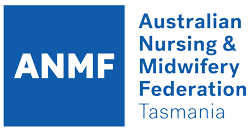ABOUT THE ANMF
Learn more about who we are and what we offer
The ANMF past and present
We are the Tasmanian Branch of the Australian Nursing and Midwifery Federation (ANMF) – the largest union in Australia. As a leading voice in healthcare, we advocate on behalf of our nursing, midwifery, and care worker members on a range of industry issues. With over 345,000 members nationwide and 8,000 in Tasmania alone, our strength and collective bargaining power allow us to actively promote and protect the interests of the nursing team.
The ANMF Tasmanian Branch is the largest voice of nurses, midwives, and care workers in the state. Our collective strength allows us to represent members working in a range of healthcare settings. We are involved in and work collaboratively, with our members, government agencies, and professional bodies and industry leaders to improve conditions for the nursing team, while also safeguarding quality patient care. See a brief history below outlining how the ANMF Tasmanian Branch came to be what it is today. If you have further questions, please don’t hesitate to get in touch.
